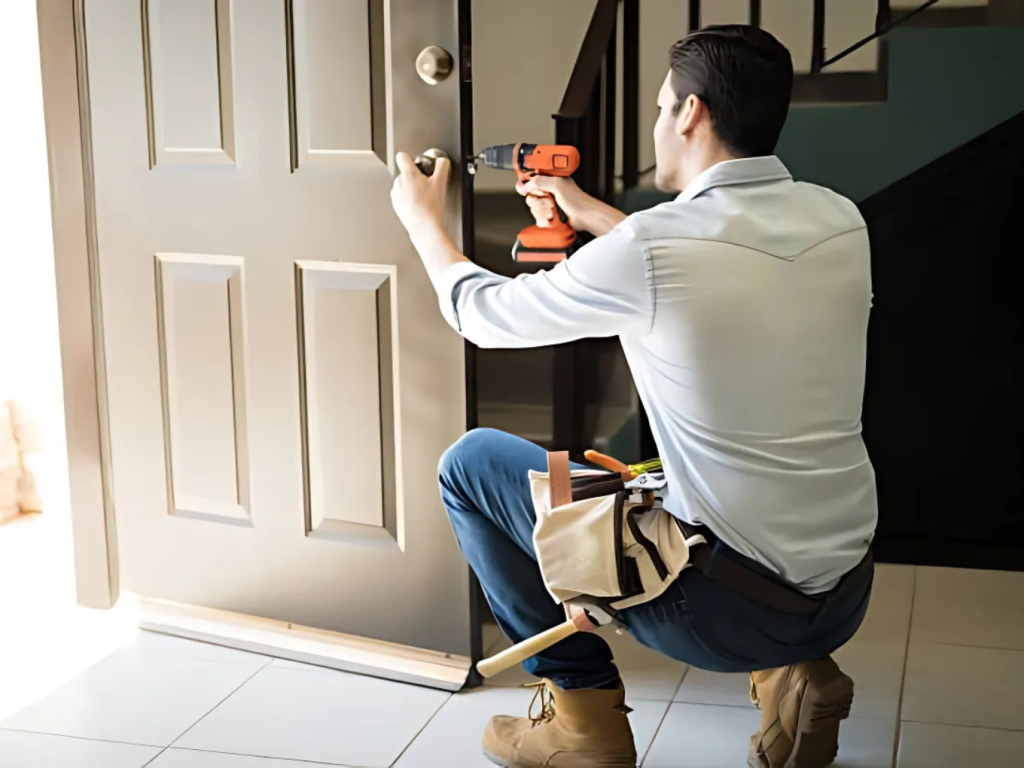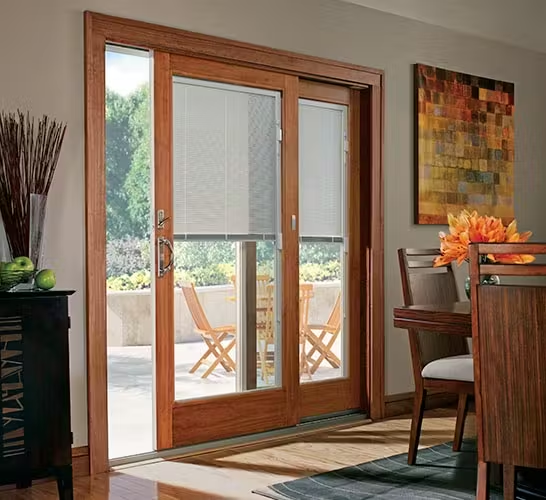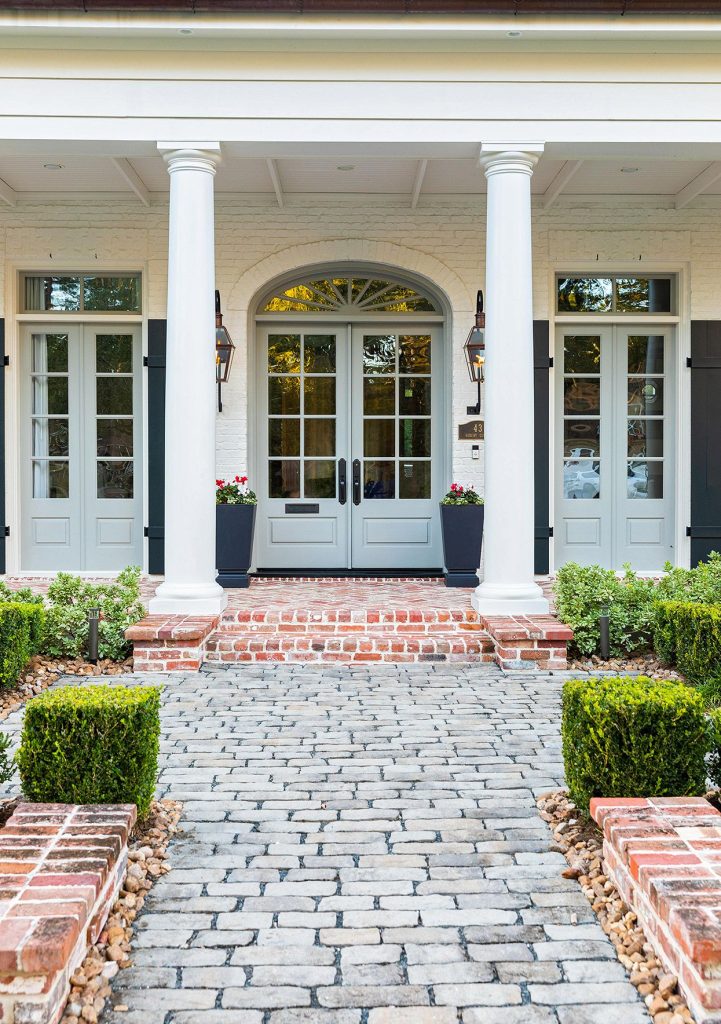How to Prepare Your Home for a Front Door Replacement
Your front door serves as both the focal point of your home’s exterior and your first line of defense against intruders and the elements. When the time comes for a door replacement, proper preparation can make the difference between a smooth, efficient installation and a process fraught with delays and unexpected complications. Whether you’re upgrading to enhance curb appeal, improve energy efficiency, or address security concerns, replacing your entry door is a significant investment for homeowners that requires thoughtful planning. At Doormatic, we understand that the shopping process for replacement doors can feel overwhelming with countless styles, materials, and hardware options to consider. This comprehensive guide will walk you through the essential steps to prepare your home for a front door replacement, ensuring a seamless transition from your old, worn entry to a beautiful new entryway that will serve your home for decades to come.
Assessing Your Current Door Situation
Identifying Problems with Your Existing Door
Before selecting a replacement, thoroughly inspect your current door for issues like drafts, energy loss, security vulnerabilities, or aesthetic concerns that have prompted your decision to replace.
Evaluating the Entire Frame Condition
A front door replacement often requires more than just swapping the door itself—examine your door frame for rot, damage, or structural issues that might necessitate a complete frame replacement.
Measuring Your Existing Door Correctly
Take precise measurements of your current door’s height, width (in inches wide), and thickness, ensuring you include the exact specifications needed for ordering a properly sized replacement.
Assessing Weather Damage
Look for signs of extreme weather impact on your current door, noting areas particularly vulnerable to rain, sun, or temperature fluctuations that might influence your choice of replacement material.
Choosing the Right Replacement Door
Understanding Door Material Options
Steel Doors: Security and Durability
Steel exterior doors remain a popular choice for homes needing extra durability and security, with steel entrance doors offering unmatched durability against forced entry attempts.
Fiberglass Doors: Versatility and Low Maintenance
A 6-foot, 8-inch-tall paneled composite door offers the beauty of wood without maintenance concerns, making fiberglass-composite doors increasingly popular for modern homes.
Wooden Doors: Classic Beauty and Warmth
Solid-wood doors and stock wood doors provide timeless appeal and natural beauty, though they require regular maintenance to preserve their long-lasting beauty.

Metal Doors and Aluminum Doors: Modern Alternatives
Contemporary metal doors and aluminum options offer sleek profiles ideal for modern design aesthetics while providing excellent weather resistance.
Door Style Considerations
Classic Door Configurations
From a True Divided Lite Entry Door to more traditional panel designs, classic style options remain enduringly popular for many architectural homes.
Modern and Contemporary Options
For modern homes, streamlined fiberglass entry doors or craftsman-style black front doors provide clean lines and updated aesthetics.
Specialty and Statement Doors
Statement pieces like a modern farmhouse wood door or a 9-Lite door and 12-inch sidelights create distinctive entryway design focal points.
Size and Configuration Options
Standard Sizes vs. Custom Size Requirements
While many homes accommodate standard 80-in. door dimensions, others require custom sizing for perfect installation fit.
Single Entry vs. Double Doors
Consider whether a single entry door or an impressive True Divided Lite Double Entry Door better suits your home’s scale and your functional needs.
Sidelights and Transoms for Additional Natural Light
Options like True Divided Lite Entry Door with Sidelights & Transom dramatically increase natural light while enhancing curb appeal.
Budgeting for Your Door Replacement
Understanding the Components of Door Replacement Costs
The average cost of door replacement includes more than just the door itself—factor in installation costs, hardware, finishing, and potential frame work.
Material Cost Variations
Door prices vary significantly based on material, with fiberglass and steel typically offering midrange price points while real wood options command premium prices.
Installation Fee Considerations
Professional doors installation typically represents about 20-30% of your total project budget, a worthwhile investment for proper installation that ensures performance.
Additional Hardware and Finishing Expenses
Factor in costs for premium hardware, weatherstripping, and finishing materials that complete your door installation.
Preparing Your Home for Installation Day
Clearing the Work Area
Remove furniture, decor, and obstacles from both the interior and exterior areas surrounding your entry door to provide installers with adequate workspace.
Protecting Flooring and Adjacent Surfaces
Use drop cloths and protective materials to shield your flooring, walls, and nearby furnishings from potential damage during the removal and installation process.
Security Planning During Door Replacement
Consider how home security will be maintained during the brief period when your home may be without a functional front door.
Pet and Child Considerations
Make arrangements for children and pets to be away from the work area during installation to ensure their safety and prevent disruption.
Technical Considerations for Door Replacement
Energy Efficiency Factors
Insulated Cores for Temperature Control
Doors with insulated cores or a rustic walnut core provide significant insulation value that reduces energy costs year-round.
Low-E Glass Options for Light Without Heat Transfer
When selecting doors with glass inserts, choose Low-E glass or Flemish Low-E glass options that admit natural light while blocking UV rays and heat transfer.
Weather Stripping and Sealing
Proper weather stripping is essential for creating a weather resistant seal that prevents drafts and enhances your door’s energy efficient performance.

Security Enhancements to Consider
Multi-Point Locking Systems
Advanced locking mechanisms provide an extra layer of security beyond traditional deadbolts.
Reinforced Strike Plates
Upgrading to reinforced strike plates with longer screws significantly increases resistance to forced entry.
Smart Lock Compatibility
Ensure your new door can accommodate smart security features if those technologies are part of your home security plan.
Selecting the Right Door Features
Glass Insert Options
Privacy Glass Variations
From frosted to textured options, specialized glass designs provide maximum privacy while still allowing light penetration.
Decorative Glass for Aesthetic Appeal
Decorative glass inserts add intricate design elements that can transform a basic door into a stunning focal point.
Impact-Resistant Glass for Protection
In areas prone to severe weather, impact-resistant glass provides an additional layer of protection against storm damage.
Hardware Selection
Finish and Style Coordination
Choose hardware finishes that complement both your door material and your home’s overall design aesthetic.
Functional Hardware Considerations
Beyond appearance, evaluate hardware for durability, security features, and ease of operation.
Premium Hardware Upgrades
Investing in high-quality exterior door hardware often provides better long-lasting performance and enhanced security.
Frame Preparation Essentials
Evaluating Frame Condition
Inspect your existing frame for damage, rot, or structural issues that might compromise your new door’s performance.
Frame Repair vs. Replacement
Determine whether your current frame can be repaired or if a complete replacement with a rot-resistant, low-maintenance frame is necessary.
Ensuring Square and Plumb
A perfectly square frame is essential for proper door operation—even minor misalignments can cause significant functional problems.
Preparing for Casing and Trim Work
Plan for new flat casing or trim installation, having appropriate materials like galvanized casing nails and additional casing nails on hand.
Choosing the Right Installation Team
Professional vs. DIY Installation
While DIY may seem cost-effective, professional installation ensures proper alignment, weatherproofing, and warranty protection.
Vetting Installation Professionals
Research installation teams carefully, checking credentials, experience with your specific door type, and customer reviews.
Understanding Warranty Implications
Some door warranties are only valid with professional installation—understand how your installation choice affects warranty coverage.
Post-Installation Support Expectations
Clarify what support will be available after installation for any adjustments or issues that might arise.
Why Choose Doormatic for Your Door Replacement
Unmatched Selection and Expertise
Doormatic offers a broad selection of high-quality exterior doors, from True Divided Lite Single Entry Door options to specialty designs like the Ventura Solid Panel Mahogany Entry Door.
Professional Installation Guarantee
Our installation teams bring superior craftsmanship and technical expertise to every project, ensuring your door functions perfectly from day one.
Comprehensive Warranty Protection
Every door we install comes with robust warranty coverage, protecting your effective investment for years to come.
Energy Efficiency Specialization
We specialize in highly energy efficient door solutions that provide exceptional energy efficiency while reducing long-term energy costs.
Customer-Focused Process
Our replacement process centers on your needs and preferences, with design consultants helping you navigate our limitless selection of options.

Material-Specific Preparation Considerations
For Wood Door Installations
Prepare for potential finishing work and understand the maintenance requirements that preserve the natural beauty of wood provides.
For Steel Door Replacements
Ensure proper support for these heavier doors and consider any modifications needed to accommodate a steel frame.
For Fiberglass Door Installations
Understand the specific requirements for mounting hardware on fiberglass substrates and any special considerations for the perfect frame fit.
For Custom or Specialty Doors
Prepare for potentially longer lead times and more complex installation requirements with specialty items like a True Divided Lite Double Door with Sidelights.
Post-Installation Preparations
Final Finishing Requirements
Some doors require on-site finishing—prepare appropriate space and ventilation for any painting or staining.
Hardware Break-In Period Adjustments
New hardware may require minor adjustments as it “breaks in” during the first few weeks of use.
Maintenance Supply Preparation
Stock appropriate cleaning and maintenance supplies specific to your new door’s material requirements.
Documentation Management
Create a dedicated file for warranty information, care instructions, and manufacturer specifications for future reference.
Conclusion
Preparing thoroughly for your front door replacement ensures the process flows smoothly while maximizing the value of your investment. From careful measurement and material selection to creating ideal conditions for installation day, each preparatory step contributes to achieving superior results. A well-chosen, properly installed entry door enhances your home’s security, energy performance, and aesthetic appeal for decades. By understanding the options available—whether you prefer the traditional warmth of wooden doors, the balance of design and durability offered by fiberglass, or the security focus of steel—you can make informed decisions that align with your priorities and budget. Remember that your entry door is far more than a functional necessity; it’s an expression of your home’s character and a daily point of interaction that deserves thoughtful consideration and quality craftsmanship.